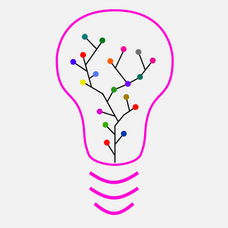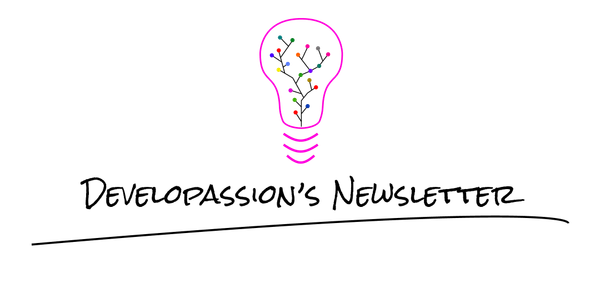The Past, Present and Future of Digital Knowledge Management: From Paper to AI-Enhanced Systems
Explore the fascinating evolution of Knowledge Management from isolated documents to AI-enhanced knowledge graphs, and discover what the future holds for how we capture, connect, and leverage our ideas.
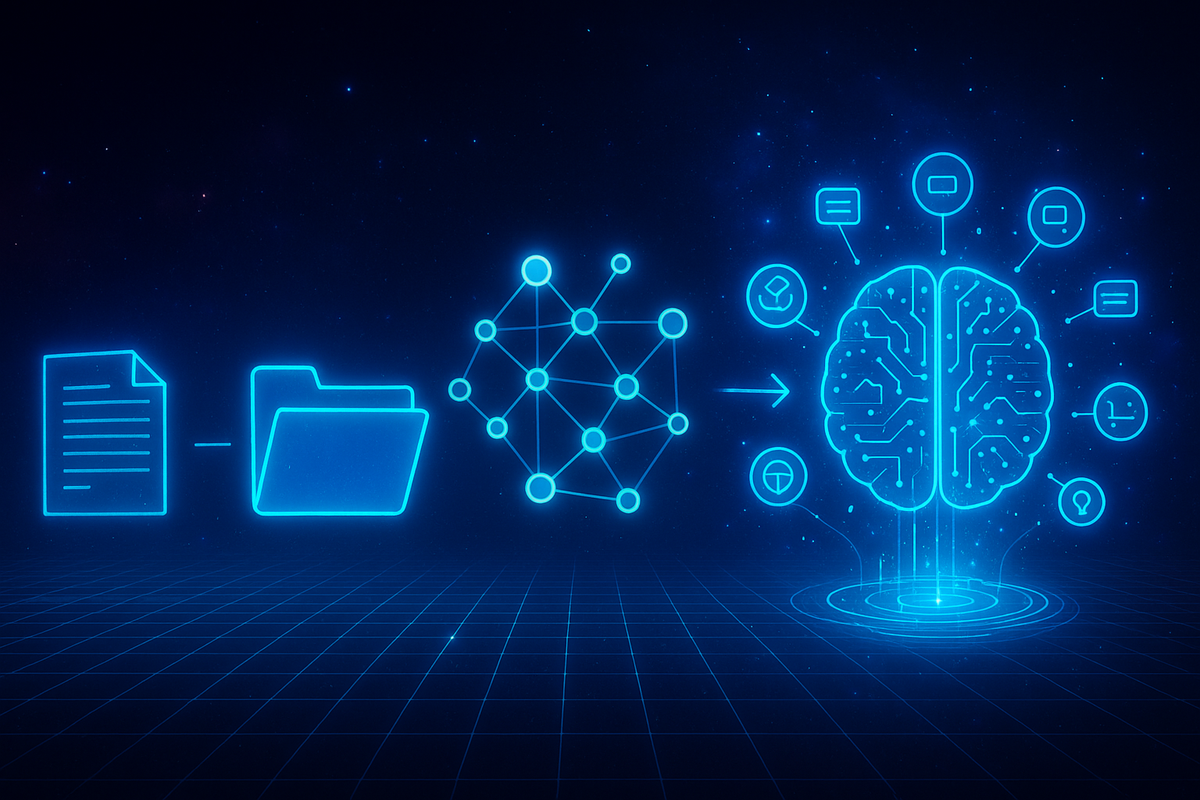
Knowledge Management has evolved dramatically over the past two decades, transforming from simple document storage to interconnected knowledge graphs powered by AI.
In this article, I want to explore the fascinating evolution of Knowledge Management, from isolated paper documents to today's AI-enhanced knowledge systems, and share my vision for what lies ahead.
Introduction
Yesterday I watched an interesting video review of Zsolt Viczián's book, [Sketch Your Mind](sketch-your-mind dot com). I haven't had time to read it yet, but this video made me ponder about the past, present & future generations of Knowledge Management.
Whether we realize it or not, how we manage our knowledge fundamentally shapes how we think, learn, and create. From paper notebooks to AI-enhanced systems, each generation of Knowledge Management tools has opened new possibilities for human potential.
To get some context before we dive in, first take a look at the video (It's in French, but it's still worth watching):
TL;DR
Here are the key points we'll explore:
➤ Four generations of Knowledge Management evolution - from isolated documents to knowledge graphs + visual thinking
➤ Why current visualization capabilities mark a fundamental shift - integrating visual thinking as a first-class citizen in knowledge systems
➤ AI's transformative potential - moving beyond basic automation to true thinking enhancement with AI-enhanced knowledge graphs
➤ The future of connected knowledge - ideas about what's coming next
➤ Why this matters now - the 5th generation of Knowledge Management is already within reach
The Past and Present Generations of Knowledge Management
Zsolt Viczián considers that we're currently at the 4th generation of Knowledge Management. Let me discuss those, using my own words. Again, note that I haven't read Zsolt's book, so I might think about and explain all this differently.
WARNING: In this article, I'm not retracing the whole history of Knowledge Management. Instead, I focus on recent history (last 20 years or so).
First Generation: Linear/Isolated Documents & Visualizations
The first generation of Knowledge Management was purely focused on Information Management, where information would be captured in a linear form and stored in isolated documents or paper. That was the epoch of paper notebooks, Word documents, Google Docs, etc.
The thing is, there really weren't dedicated tools for knowledge management. The approach was straightforward: "I need to write a document about X for Y; let's create a Word document." Documents could be internal memos, course notes, presentations, you name it. Visualizations were created using other tools and stored in different file formats (e.g., Visio, Mind Maps, etc).
At that time, there was no focus at all on how to connect ideas. The problem of Knowledge Management was (mostly) "under the radar". Information lived in silos, scattered across countless files and folders, making it nearly impossible to see patterns or connections between ideas.
Note that I have nothing against paper notebooks. I still use paper today. I just get a lot more value out of the knowledge by transitioning it to digital. As I've argued before, there's tremendous value in going from analog to digital.

Second Generation: "Organized" Documents & Visualizations
The second generation started organizing information/knowledge into folders, grouped by project, areas of focus/responsibility, etc. There was more structure, but the information/knowledge was still stored in silos and mostly disconnected.
For that generation, the most basic approach was using folders on a file system. Evolved versions included the introduction of tools such as SharePoint for organizations, and note-taking tools such as Evernote. This generation of Knowledge Management also saw the popularity of tags rise. This added new means to categorize information beyond folders.
Tools such as Evernote created a space for thinking, which was a really important step forward for the field of knowledge management. But there was still almost no focus at all on how to connect separate ideas together. You could tag and organize, but you couldn't easily see how one idea related to another.
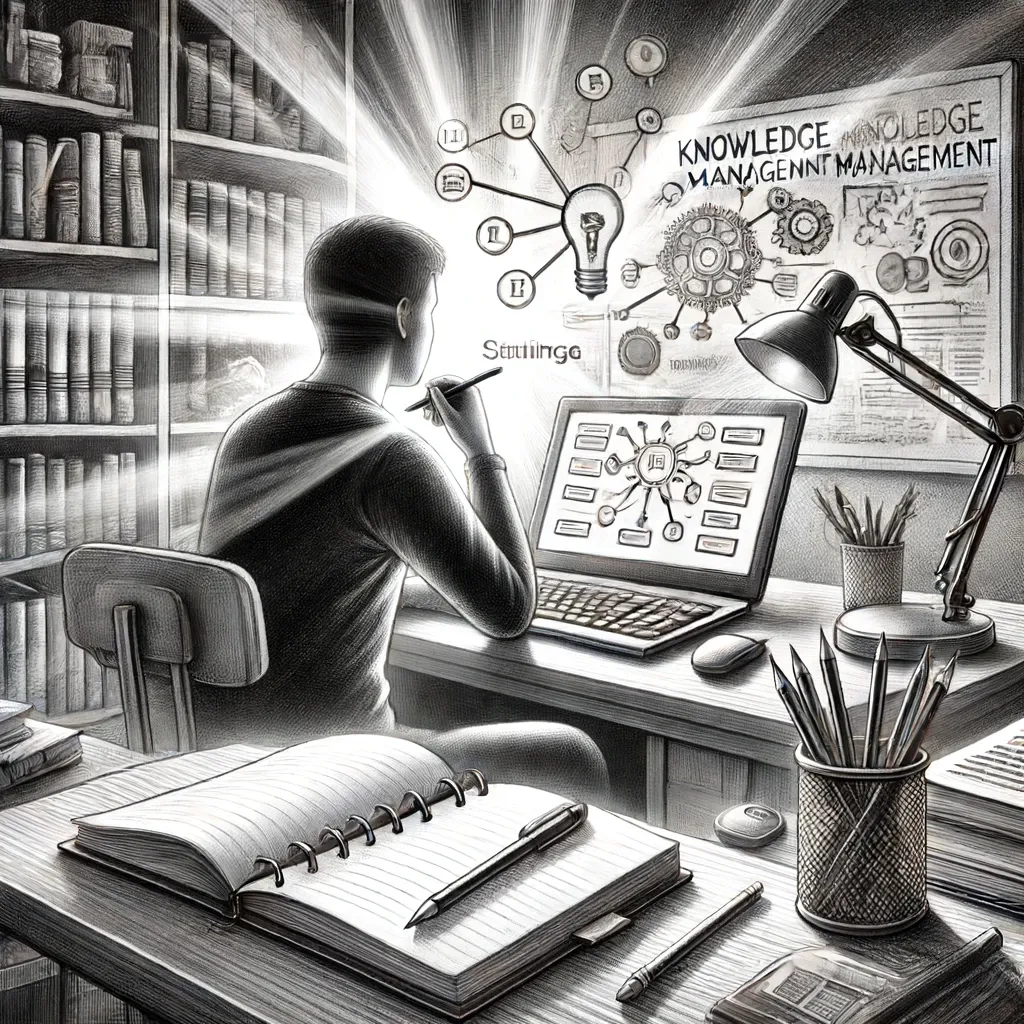
Interestingly, some tools of that generation already introduced means to add metadata. That was leveraged, sometimes heavily by larger organizations, but not that much on a personal level.
The sad part is that most organizations are still stuck at this level of Knowledge Management. They still use Sharepoint, store files on network drives, on OneDrive etc. And it's all a big mess. Documents are lost, server/tool migrations break links, people don't know where to find things, ... And organizations miss tons of opportunities because of this. As I explored in The problems Knowledge Workers face, this creates massive inefficiencies and missed potential. But again, story for another day!
Third generation: Knowledge Graphs & Tools for Thought
The third generation of Knowledge Management started when tools introduced means to organize knowledge into networks/graphs (i.e., Knowledge Graphs (KGs) and Personal Knowledge Graphs (PKGs)) rather than into linear/isolated/disconnected documents.
This all started with the creation and popularization of Wiki systems such as MediaWiki (Wikipedia), ... Those introduced means to create tons of documents in a single space, without having to think about documents as being files on a file system, but as "pages". Super importantly, those also enabled creating links between those pages. This was a key move forward, of course inspired by the way the World Wide Web works.
Things then evolved with the introduction of Tools for Thought (TfTs) that we know today such as Roam, Obsidian, Tana, LogSeq, Reflect Notes, Heptabase, AnyType, Capacities, and tons of others...
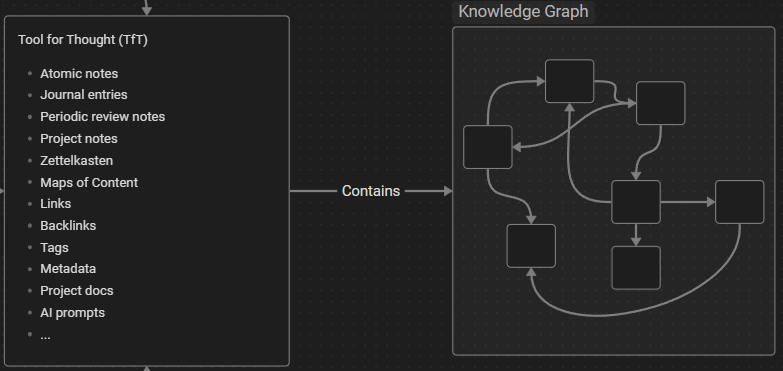
That generation really helped more people grasp the possibilities of Knowledge Management, both for individuals and for organizations. In this article I focus mostly on the individual level, but many of the ideas apply to organizations as well. The difference, I believe, is that organizations still lack a lot of maturity around Information Management (IM) and Knowledge Management in particular. When I started working in IT infrastructure, I remember discovering hundreds of isolated Word documents spread across hundreds of folders on different file servers. I was among the first to introduce and use Wikis at scale. This was a major shift because it enabled people to know where to find information, to search for information from a single space, to create Information Radiators, ... But that's a topic for another day!
Through the third generation, many ideas have emerged and matured, such as Atomic notes, Evergreen notes, Maps of Content (MoCs), the Zettelkasten method (applied to digital systems!), the PARA method, Building a Second Brain method (BASB), etc. This is when more and more people started creating atomic notes, composing those, connecting those through links, backlinks, tags, etc.
The key insight is understanding Characteristics of good notes and implementing Smart notes that can be truly reused and combined. This approach helps people move from simple information hoarding to building a true Web of knowledge where ideas can cross-pollinate and evolve.
Note that evolutions that came with this generation are mostly leveraged by individuals and very small teams. And that's quite sad. So consider the above to be focused on Personal Knowledge Management (PKM).
Fourth generation: Adding Visualizations to Knowledge Graphs
The fourth generation, as described by Zsolt, corresponds to the addition of visualization capabilities to knowledge management tools and the introduction of more visual than textual PKM tools.
With the evolutions of the Web platform and tools, it became easier and easier to build Web-based alternatives to long-established Desktop applications such as Visio and the like. That's when SaaS products such as Miro, Whimsical and many others have appeared and gained in popularity. Those leverage the canvas element of the Web platform to create an infinite canvas where ideas can be laid out. Those products indeed influenced those who already practiced knowledge management, as well as makers in the space. And, gradually, different tools/platforms/plugins have emerged.
Fast forward to today, more and more tools have added support for creating visualizations or even use those as the core of their application's UI/UX. This has enabled a fourth generation of knowledge management: a generation where visualizations can finally be first-class citizens in knowledge graphs. For instance, in Obsidian, it's now possible to create Canvas "notes" where you can add cards with text, images, PDF documents, videos, existing notes from the knowledge graph, etc. And there are also various plugins, such as the Excalidraw plugin for Obsidian (built by Zsolt himself!) that have tons of cool features beyond cards/embeds, alignment/positioning, colors, Bezier curves, ...
This means that we can now build powerful/varied visualizations as part of our knowledge base, and integrate those fully with the rest of our knowledge, with bidirectional links. Instead of creating visualizations in one tool, creating a static snapshot and pasting it in a note in a different tool/platform, it's now all in one place, connected, and always synchronized/up to date. And we can incorporate images, videos, Web pages, etc into those:
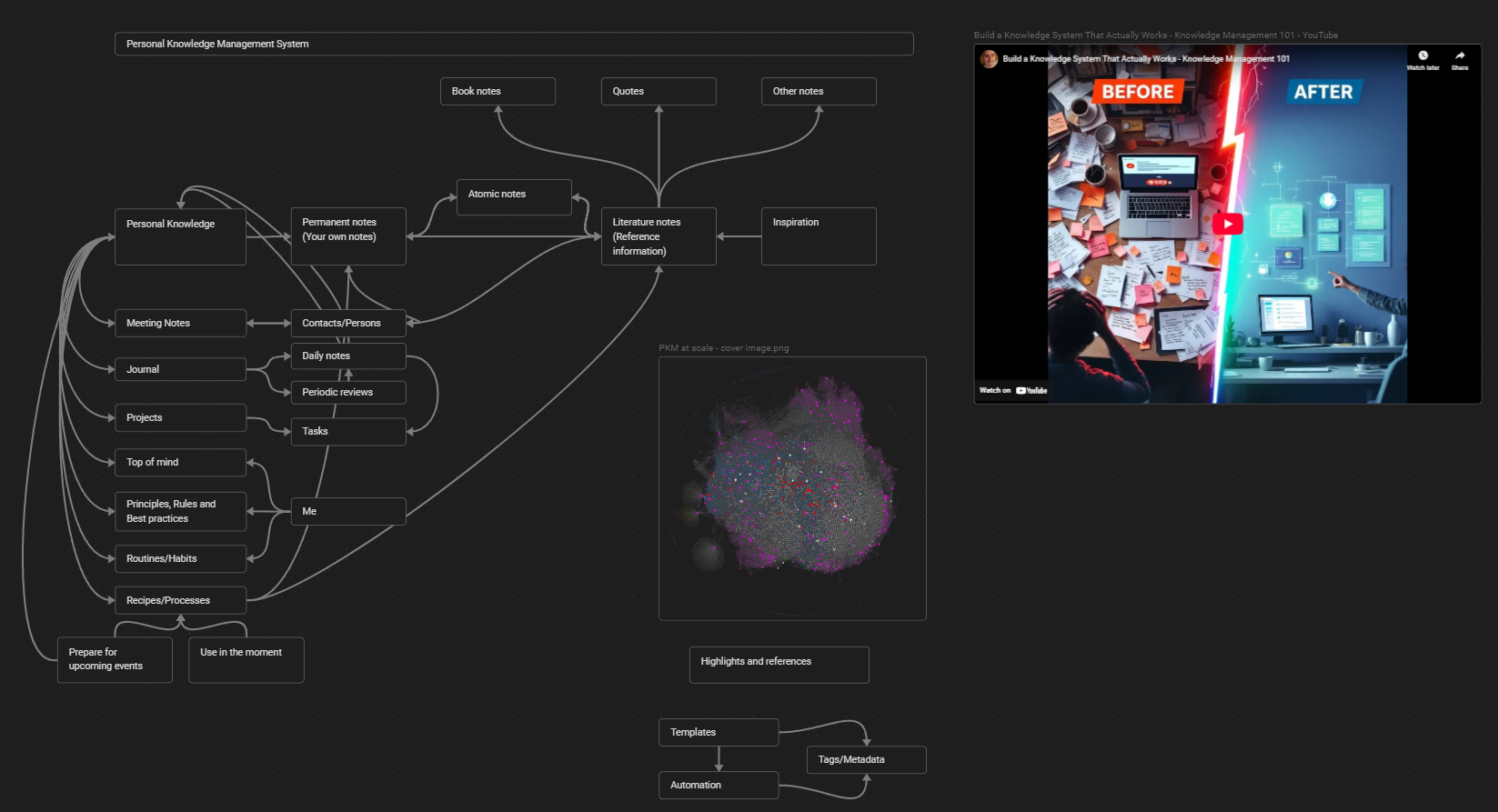
Beyond the impact on Information Management (IM) (fewer silos), there's also a big shift to consider regarding the practice of knowledge management. Some people think they're not visual thinkers, but it may just be because they never learned how to draw. We can all think visually, no matter how well we can draw. It's not a left/right hemisphere thing either. It's just a question of practice, and intent. The goal is not to create perfect visualizations, but to use visualizations as a support.
Consider that visual thinking is not an option, but a useful addition that you should not miss. It's one more dimension of thinking to explore and leverage. With visual thinking, we can better build more intuition about problems and concepts, create way better mental models, understand/analyze ideas, problems, etc. Last but not least, visualizations make it much easier to share ideas and help others
This adds depth and more options to knowledge management. Some ideas need to be described in text, but certain aspects might be much easier to explain visually. Other ideas also benefit from having a visual version to support an argument, identify missing elements, recognize blind spots, etc.
What about the future??
But things clearly won't stop there. Change is the only constant. Knowledge Management will keep evolving. Here are some of my current ideas about the future of Knowledge Management...
Same Data, Different Representations
First, I think that knowledge management tools need to let us explore/visualize/think about the same notes/ideas/knowledge/knowledge graphs under different forms. Creating visualizations/drawing is one way. Another example is Obsidian's Graph View. As it stands, it's "just a toy" when used for a large knowledge base. In my case it's completely unusable with ~10K notes. What's more useful on a daily basis is the local graph view. Those features are not nearly as powerful/useful as they could be. Some tools go a tad further, but most don't.
One improvement would be to represent the knowledge graph as a 2D and/or 3D virtual world, where we could pin each idea/cluster of ideas at a certain position. This could enable creating a Mind palace, based on the idea of Frances Yates. And that would be epic. VR experiences could also be built around knowledge graphs and 3D representations. One could then explore and interact with that virtual world through VR. I don't think this has been explored at all so far.
Here's another example: a textual note containing an outline may be visualized as a mind map. There are already extensions for Obsidian enabling this (e.g., the Mindmap plugin for Obsidian), but knowledge management tools could have built-in support for that.
Another way to present the information in a knowledge graph consists in aggregating/filtering and displaying it as tables, cards, Kanban boards, etc. That has been made possible in Obsidian for a while through the Dataview plugin for Obsidian, and now with the upcoming Bases feature. Bases are a big step forward for Obsidian.
Thinking more deeply about the different ways in which the information may be represented without changing its underlying form/format (i.e., what is actually stored in the system) is highly valuable to further enhance what we can do with Tools for Thought (TfTs).
AI Everywhere
Another area of improvement is through the evolutions of AI and its support/integration in knowledge management tools. AI creates tons of new opportunities, and we have barely scratched the surface at this point. Beyond the basics (e.g., write, rewrite, summarize, translate, research, etc), I think that AI can be leveraged to help us better deal with different phases of the Personal Knowledge Management Process (assuming there's a canonical one 😂).
First, AI could help us find/curate/explore information that is relevant to our ongoing projects. Not to hoard information in our knowledge base, but as a way to learn, grow, ... Not replacing our thinking, but enhancing it.
Second, AI could remove all the tedious aspects of knowledge management (e.g., tagging, identifying linking opportunities, going from a network of ideas to linear documents, ...). There's a ton yet to do here.
Third, once the tedious aspects of knowledge management are not roadblocks anymore, it will become actually reasonable to consider "dumping" more and more ideas, without fearing to feel overwhelmed.
Fourth, AI could also be used to generate/present us ideas/networks of ideas or visualizations (that are part of the knowledge graph) at different levels of detail. Imagine this: You have a group of ideas about X and AI generates a document/visualization that explains it all. On top, a slider lets you recreate the document/visualization either with more or fewer details. Far left: "Explain it like I'm 5". Far right: "PhD level". This would be super useful.
Fifth, AI integrations should let us leverage our notes at scale with AI, and AI should easily be able to connect to our knowledge bases & find/use/update the information. Again, this is possible today and is getting easier, but it remains quite technical (e.g., through the Model Context Protocol (MCP). And there's a gazillion more things that AI already enables for knowledge management that we have yet to discover/implement.
Voice Control & Support
Speech-to-text (STT) and text-to-speech (TTS) should become much more important in the future of knowledge management. Applications such as Voicenotes AI already hint at that future, but there's so much more that can/should be done.
Tools for Thought (TfTs) should be fully controllable through voice and fully integrated with AI. It should be possible to easily create/add new notes to the system, have AI connect the dots, etc. It should also be possible to interact with AI through voice in order to have it play different roles and perform different tasks, either within the knowledge graph, or elsewhere.
A World of Connected Knowledge
One more area that I would love to see evolve in the future is "multiplayer", the ability to collaborate on knowledge at scale. In the future, wouldn't it be great if you could connect your knowledge graph to mine, and be able to find things I've made public/visible/available for purchase/etc, maybe connect your own ideas to mine, reuse/remix those, etc. Going even further, beyond single users, one could imagine extensions for communities/organizations/etc.
Knowledge grows when it gets shared
This could be tremendously helpful and valuable for researchers and curious minds alike.
This would enable a completely different level of knowledge sharing for humanity.
Smooth Publishing/Cross-posting
A related area is publishing integration and support; the ability to make elements of the knowledge graph (individual ideas, individual visualizations or entire subgraphs of those) available on the Web for others to see/interact with/comment, etc. This deserves more attention. Apart from tools such as Notion that are much closer to wikis than to knowledge management tools, this mostly doesn't exist. And I'm not even discussing cross-posting to different platforms/sites trying to maintain consistency over time...
Version All The Things
In general, it's not that easy to deal with multiple versions of elements in a knowledge base. In the future, I'd love to see an Apple-like Time Machine for ideas. And I don't only mean versioning of single ideas/notes, but versioning of the entire knowledge graph. Dreaming even bigger, having the ability to connect different versions of ideas across one or even multiple knowledge bases. This would enable another level of exploration.
Deeper Support for Classes
Object-Oriented Programming (OOP) has been a major software development paradigm for decades. Nowadays, software developers still tend to use those principles to describe the concepts that their applications handle. One of the core ideas of Object-Oriented Programming is to define "Classes" that each represent a specific concept in the system. For instance, an application created for a car repair shop could use classes such as "Employee", Vehicle", "Customer", "Appointment", "Invoice", ... And each of those classes would include specific pieces of information. For example, the Customer class could include the customer's given name, family name, address, VAT number, ... Also, those types may share some properties, helping with reuse & consistency. For example, the "Customer" and "Employee" types/classes could actually have a shared "Person" type/interface. It's more complex, but let's leave it at that.
This is valuable in the world of software development because it helps a ton with managing complexity, dealing with information more consistently/systematically, etc.
Why am I discussing about this? Because object orientation is actually also very relevant for knowledge management. One thing I highly recommend when designing a knowledge management system is to identify the types of notes that you need. For instance in my own system, I use the following ones:
- Private notes
- Literature notes (with various sub-types such as books, expressions, poems, quotes, ...)
- Permanent notes (with various sub-types such as articles, books, expressions, poems, quotes, short stories, ...)
- Highlights
- Maps of Content
- Meeting notes
- Contact notes
- Person notes
- Voice notes
- YouTube video notes
- Periodic notes (daily, weekly, monthly, ...)
- Project notes
- ...
In my system, each of those types of notes have associated templates metadata properties. And some of those properties should only contain very specific values (e.g., ratings from 0 to 5, priority from Very Low to Very High, ...). And the thing is that depending on the tool you use, you'll have more or less (or no) support to describe/document those types of information in order to bring and maintain structure across your knowledge base.
Right now, very few Tools for Thought have built-in support for defining types/classes (whatever people decide to call those). For instance, I'm using Obsidian, and there's no support for what I've just described. To work around that limitation, I have to rely on plugins (e.g., Metadata Menu plugin for Obsidian) and templates to document the properties that my note types should include (and optionally their list of allowed values).
There are exceptions though. Among the tools that do support defining types/classes, I can think of Capacities with Object types, Tana with Supertags, ...
In the future, I hope that more tools will introduce first-class support for defining classes/types, more datatypes for metadata/properties, as well as ways to describe constraints and validation rules for those (e.g., lists of allowed values, minimum/maximum length, patterns & regular expressions, ...). This would help a lot to define more solid/maintainable systems, better user experiences, ...
Reusable systems and templates
One more idea I have in mind that's more down to earth would be the ability to build/share/reuse entire knowledge organization systems. For instance, my Obsidian Starter Kit is one. But in its current form, it's quite "basic" and "brittle", in the sense that there are no guardrails. It's easy to break the system because it's not deeply integrated with Obsidian. It's built on top of the tool and combined with various plugins. If Tools for Thought (TfTs) had more support for systems/templates and reuse across knowledge graphs, then we could build and reuse entire systems in a much easier/safer way.
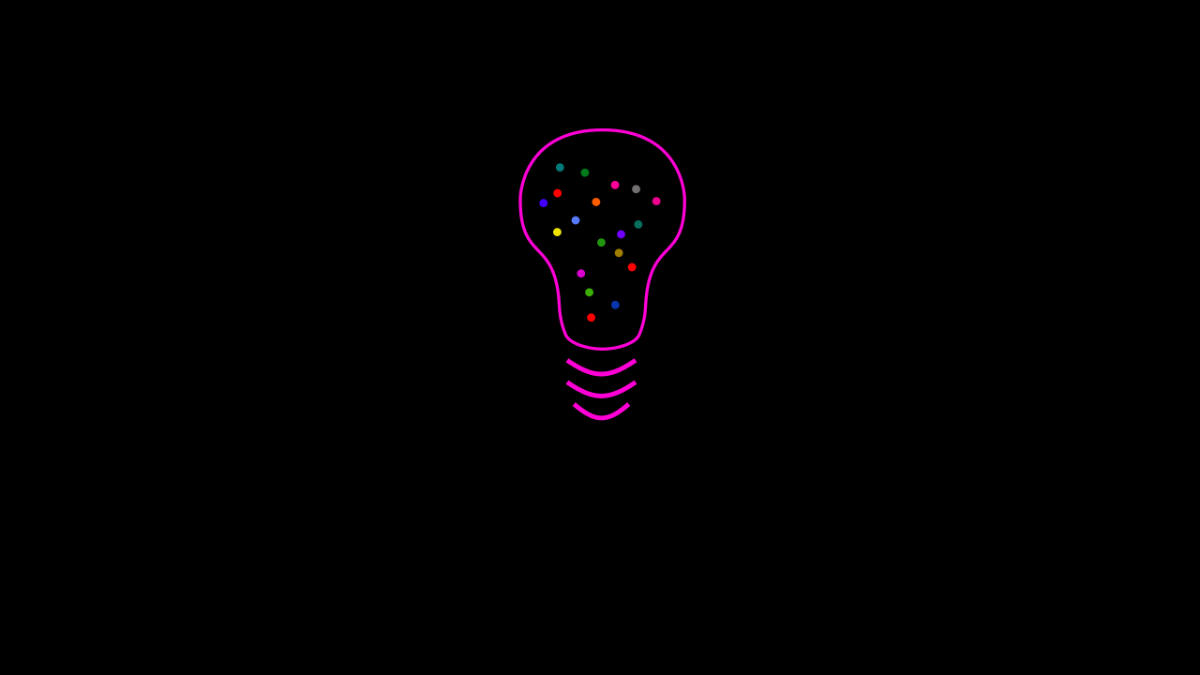
Conclusion
In this article, I wanted to let my mind wander a bit. It felt interesting to think about how Knowledge Management has evolved over the years, both as a practice and thanks to more and more powerful tools and integrations. It's also fun to brainstorm and imagine what the future could look like.
The list above is by no means exhaustive. There are thousands of directions in which knowledge management could evolve. But when I think about what's just around the corner, that's what comes to mind. The technology required to implement everything I've listed above is already here. So the 5th generation of Knowledge Management is already within reach.
The future is already here. It's just not very evenly distributed
There's so much more potential for knowledge management to support and improve the way we think, and the way we work.
That's it for today! ✨
About Sébastien
I'm Sébastien Dubois, and I'm on a mission to help knowledge workers escape information overload. After 20+ years in IT and seeing too many brilliant minds drowning in digital chaos, I've decided to help people build systems that actually work. Through the Knowii Community, my courses, products & services and my Website, I share practical and battle-tested systems. You can follow me on X 🐦 and on BlueSky 🦋.
I am an author, founder, and coach. I write books and articles about Knowledge Work, Personal Knowledge Management, Note-taking, Lifelong Learning, Personal Organization, and Zen Productivity. I also craft lovely digital products.
If you want to follow my work, then become a member and join our community.
Ready to get to the next level?
If you're tired of information overwhelm and ready to build a reliable knowledge system:
- 🎯 Join Knowii and get access to my complete knowledge transformation system
- 📚 Take the Course and Master Knowledge Management
- 🚀 Start with a Rock-solid System: the Obsidian Starter Kit
- 🦉 Get Personal Coaching: Work with me 1-on-1
- 🛒 Check out my other products and services. These will give you a rock-solid starting point for your note-taking and Knowledge Management efforts




